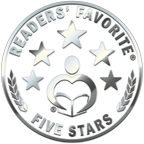You may have seen headlines this week talking about a solar eclipse–often with a tone of awe, or even alarm. But why bother, really, especially when most of us in the US barely noticed a thing?
Let’s start with the basic facts. Super early on Thursday morning, the new moon passed in front of the sun (for East coast US; on the West coast, this happened on Wednesday night, because time zones are puzzling!). Of course, the sun had already set for us, so there wasn’t a chance of seeing anything. But nonetheless, the moon was between earth and the sun–see handy infographic below.

Now, the moon passing roughly between the sun and earth is a common occurrence. Monthly, one might say. 😉 That’s what makes a “new moon,” or a moon that’s not reflecting the sun’s light onto the earth. But the alignment has to be just right to create an eclipse.
Eclipses come in two main flavors: solar, where the moon obscures part of the sun (like what happened on Thursday) and lunar, where Earth’s shadow is cast on the full moon (so, Earth lines up perfectly between the sun and moon). And you can have a partial eclipse, where just a little part of the sun or moon is blocked, or a full eclipse–that’s what the shadows in the diagram demonstrate. The eclipse on Thursday excited people because it was a hybrid kind, particularly rare. For some who could see it, it created a “ring of fire” where the new moon was basically a very large hole in a donut of light before it obscured the sun.
Have I lost you yet? (If not, check out NASA’s site for more info!) 😉 And now we can start talking about astrology and folklore! Cultures around the world have considered eclipses to be magical. If you put yourself in a pair of historic shoes, this makes more sense. For people who relied on the sun to grow crops and who watched phases of the moon to track time, an eclipse was a notable event–an abnormality. And of course, abnormalities mean magic is at play! (Only kind of kidding, because we do still think like this today: if we don’t understand something, it’s clearly magic. 🙂 ) These days, in Western astrology, all that folklore has condensed into the idea that an eclipse makes everything more intense. Take this definition as an example:
Eclipses are considered extremely potent New Moons or Full Moons and may herald significant changes in your life if they connect with your natal chart . . . Eclipse season occurs twice each year, and usually contains one solar and one lunar eclipse.
The Astrology Dictionary, p. 34
(“Eclipse season” is a product of Earth’s alignment with the sun and moon, like we discussed above. Cool how that works out!) On their own, full moons are considered to be a time of overflowing energy (a pop-culture example would be our idea of “lunacy”) and new moons are a time for new beginnings. So a new moon eclipse, basically, could mean an extra-special new beginning. What kind of new beginning? Well, to predict that, you’ll have to dive much deeper into astrology than we have time for today. 😉
So, bottom line: should you be worried? No. But keep your eyes on those headlines, because a lunar eclipse will show up soon (now that we’re in alignment, in eclipse season). Who knows what might happen? 😉
Selected Sources
For the astrological definition above, I used Donna Woodwell’s The Astrology Dictionary: Cosmic Knowledge from A to Z (Simon & Schuster, 2019), a nice pocket-sized overview. And again, check out NASA’s site on eclipses for more explanations, safety tips, and upcoming astronomical events!
Want to Keep in Touch?
Options! You can sign up for my newsletter, which comes out twice a month and includes sneak peeks, book recommendations, cat pictures, and a round up of recent blog posts. Or, you can subscribe to the blog itself, to make sure you never miss an upcoming release. You can also do both! Either way, I’ll never share your info, and I’m looking forward to sharing with you again. 🙂
Newsletter:
Blog:





